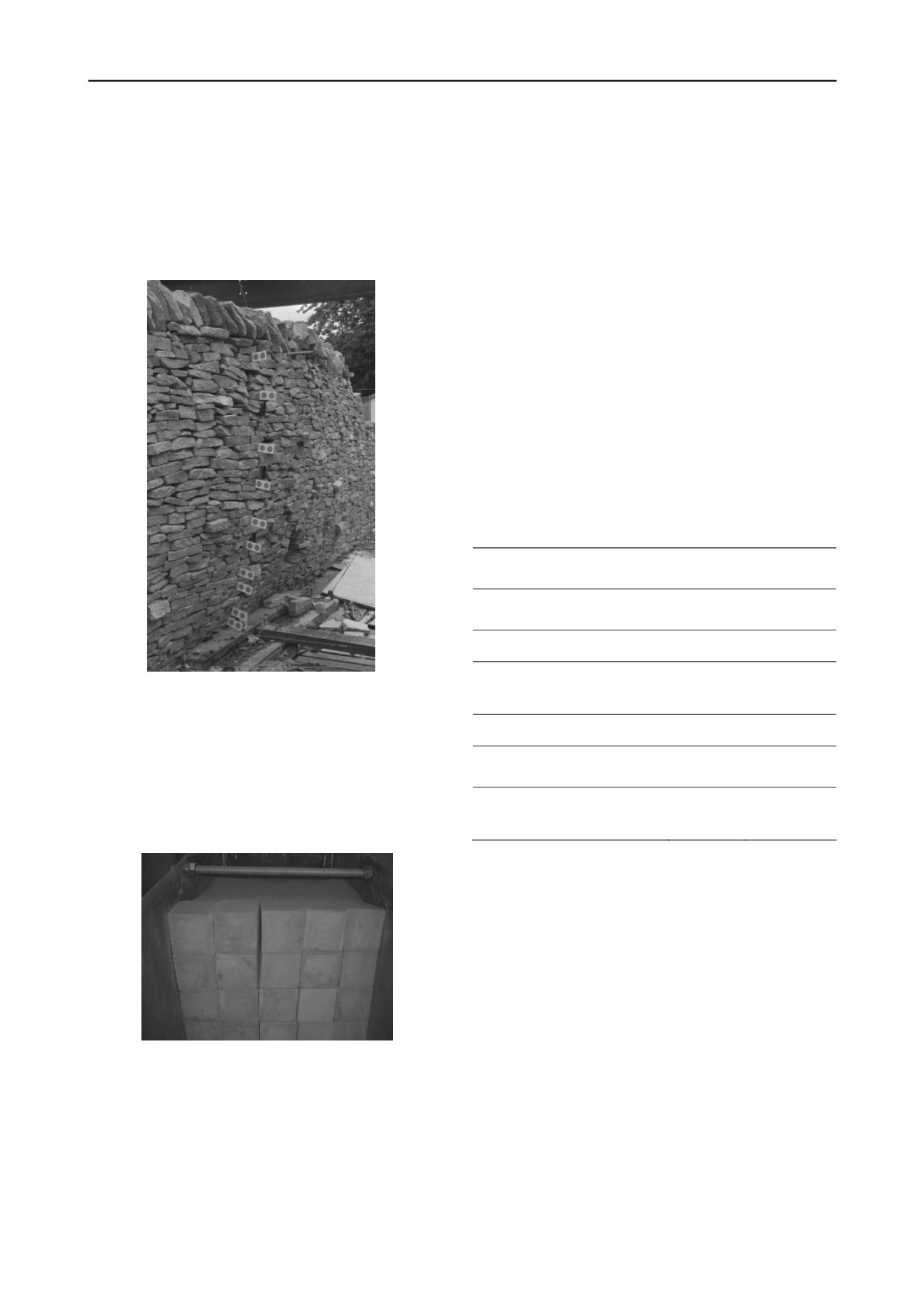
2124
Proceedings of the 18
th
International Conference on Soil Mechanics and Geotechnical Engineering, Paris 2013
the redistribution of load, and helps give the wall substantial
ductility. This behaviour is dependent upon a horizontal
construction. A less beneficial consequence of horizontal
construction is the reliance on through stones to connect
coursed layers of stone at the front and back of the wall across
an infill of rubble. These stones are necessarily larger than
those used for the rest of the construction, and there may not be
sufficient to ensure that the wall behaves monolithically, giving
a greater chance of movement and hence failure.
Figure 2. 2.4m high test wall at the University of Bath showing a classic
bulged profile in a limestone wall of horizontal construction.
1.2
Vertical Construction
There has been no notable published research into vertical or
random forms of construction, but some indications of how they
preform may be inferred from observations, in relation to the
behaviour of horizontal constructions.
Figure 3. Model test showing concrete blocks partially rotated and
wedged in against the sides of the test box.
Discussions with wallers who use the vertical form of
construction, and detailed observations carried out in Somerset
and Cornwall, suggest that vertical construction is reliant on
compressional pre-stressing forces. In the majority of vertically
constructed walls all stones either penetrate the full width of the
wall, or are tightly packed throughout the wall depth creating an
effectively continuous cross section. During construction pre-
stressing is induced through the wedging of stones at regular
intervals which when combined with the overall confinement
from the rest of the wall produces a compressional force. As the
walls are backfilled, material will fill any remaining gaps at the
back of the wall further strengthening the wedging. Evidence of
this is shown in work carried out by Bailey (2008) in
conjunction with Mundell (2009) (Figure 3). In Bailey’s work
during initial experiments using smaller individual blocks it was
found that the backfill became wedged between the blocks
making them virtually impossible to remove from the testing
box. This was a nuisance for these tests, but gives useful
information about the mechanical wedging of other wall types.
ust rely much more on the size and weight of individual
stones.
principal stone types, and principal construction
styles in this study.
l possible to
Location
Geology
1.3
Random Construction
Random construction is likely to have features common to both
the horizontal and vertical construction methods, however the
variable morphology of the stones in random construction make
it difficult to make generalised assumptions regarding any
further mechanisms involved. However, it can be seen that an
absence of bonding prevents the development of tensile strength
along the wall face, whilst the lack of alignment of vertical
stones prevents useful pre-stressing. Randomly constructed
walls m
Table 1. Locations,
The use of these different styles is often found to relate to the
types of stone available in a given area. Horizontal construction
is often found where stones are more block like in their nature,
either naturally or by easy working to desired shapes. The
stones used in horizontal construction are often stone types with
more frictional surfaces, such as limestones, which help the
stones to transfer loading more than any other mechanisms
which might occur within the wall. Vertical construction seems
more likely to be used with more slatey type materials. Due to
its laminated nature slate is often found with a comparatively
thin cross section that lends itself more to this style. This form
of construction is likely to be beneficial for stones such as slate
which have comparatively low surface friction because shear
load from earth pressure is transmitted through contact between
the rough edges of the stones rather than the smooth surfaces.
Random construction is often found where stone is difficult to
work e.g. granitic areas or where there is a variety of local stone
types, which may all be used in conjunction within a wall. The
geology of an area therefore has considerable influence on the
locally dominant forms of construction, but it is stil
see different styles within the same wall (Table 1).
Wall
Construction
Boscastle, Cornwall, UK
Slate
Herringbone
Vertical
Mousehole, Cornwall, UK
Granite
Random
Dartmoor,
Devon, UK
Intrusion
Random
Igneous
Brompton Regis, Somerset, UK
Morte Slate Vertical
Northleach, Gloustershire, UK
Formations Horizontal
Limestone
Bath,
Somerset, UK
Limestone
Horizontal
Interbedded


